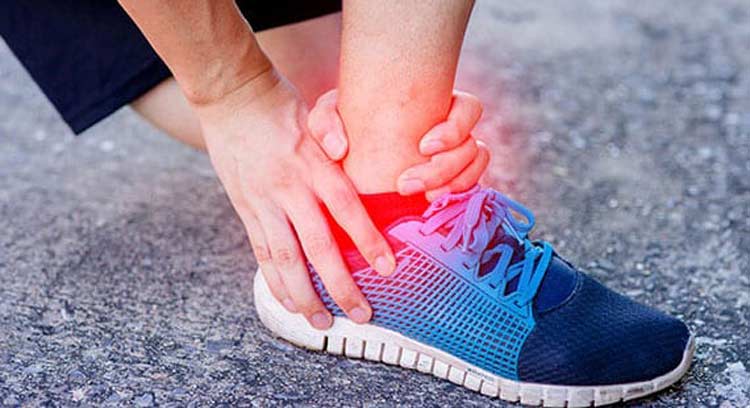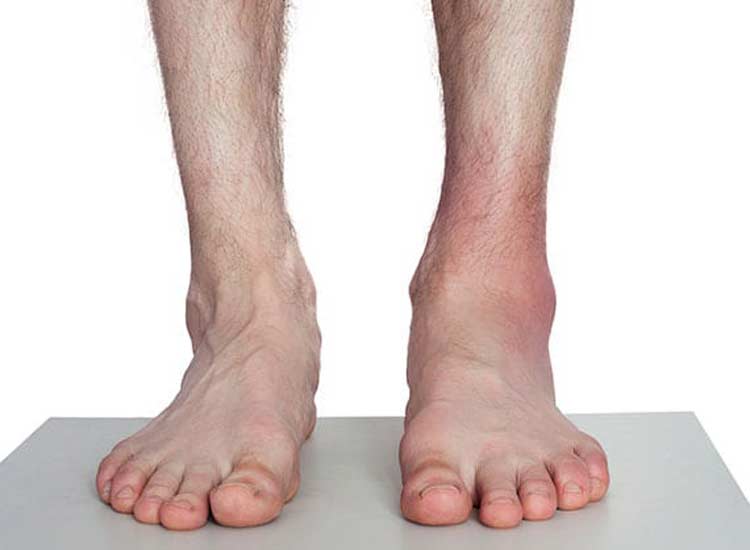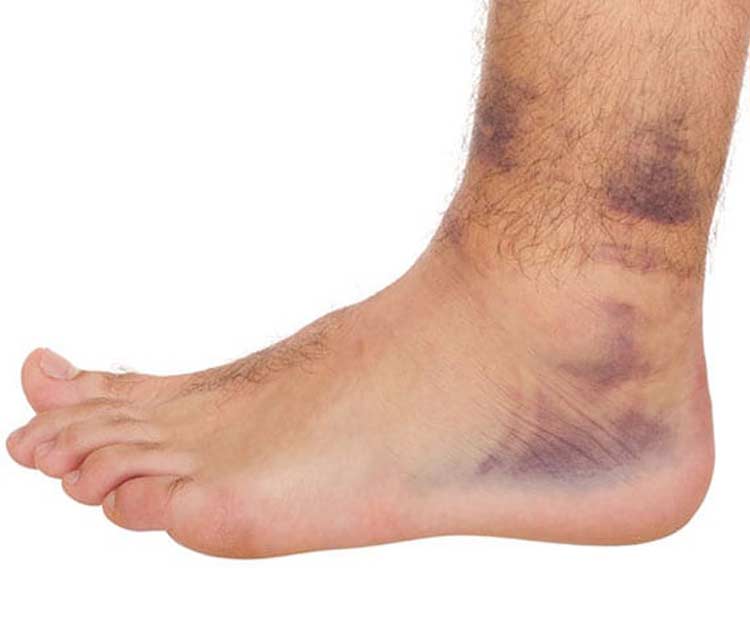
Discover how we can help you find relief from ankle sprains.
When a ligament that connects two or more bones to a joint is injured it’s called a sprain. It’s a type of injury that usually occurs when too much pressure is placed on this particular soft tissue. Sprains involving ligaments of the foot and ankle are often caused by a sudden twist or movements that these extend tissues beyond their normal range of motion. Such injuries are usually only a temporary inconvenience. A foot doctor made need to assess the situation if:
- A little rest and other home remedies aren’t effective
- The sprain is causing severe pain
Types of Sprains Affecting Feet and/or Ankles
Foot sprains affect the tough bands of tissues that connect the joints of your feet. Ankle sprains affect ligaments connecting the foot to the lower leg. Foot sprains typically occur in the mid-foot area. This is where ligament damage from accidental slips or high-risk activities like skateboarding, snowboarding, or windsurfing usually occur. Because of its prominence on the foot, the big toe (first metatarsophalangeal joint) is another common location affected by sprains. Both foot and ankle sprains can result in pain that ranges from mild to severe. Sprains, in general, are classified as follows:
- Grade I: Ligament tears are small and discomfort is usually mild.
- Grade II: These are moderate sprains that usually include larger ligament tears.
- Grade III: Ligaments are usually partially or completely detached with sprains at this level. Pain is usually severe and stability is often affected.


Causes of Sprains
Ligaments in feet and ankles can become sprained for many reasons. If you’re an athlete, it’s usually a repetitive motion injury or an accidental twist of the ankle or foot that causes a ligament to tear or detach altogether. Other times, a sprain may occur from slipping and falling or while you are in the process of trying to stop yourself from falling. Patients with underlying conditions such arthritis or an existing foot condition that affect stability and alignment may be more susceptible to ligament damage.
Possible Symptoms
Mild sprains may produce only mild discomfort. When ligament damage is moderate or severe, you might notice inflammation, redness and swelling, or tenderness in the affected area. You may also experience pain with certain foot movements or have difficulty standing, walking, or placing weight on the foot or ankle where the injured ligament is located.
When to Seek Medical Attention
Minor sprains usually respond well to the RICE method (rest, ice, compression, and elevation) that’s commonly recommended to treat such injuries. Ice should only be applied to the injured area for about 20 minutes at a time. Make sure the ice doesn’t come in direct contact with the skin. Over-the counter pain and anti-inflammatory medications may also be helpful.
If your pain isn’t going away after a few days of rest, or if you’re seeing increased swelling, redness, and bruising, see your doctor. Seek medical attention immediately if you are unable to stand or place any pressure on the affected foot. If the damage to the ligament appears to be severe or involve additional damage to the foot or ankle, you may be referred a podiatrist.
Diagnosing Sprains
An initial examination typically involves examining the affected part of the foot or ankle and assessing how the injury is affecting foot movements. Gentle manipulations may also be done to detect any signs of damage to nerves in the foot and ankle or broken bones. An X-ray may be ordered to rule out a possible fracture. An MRI is sometimes done if additional damage to soft tissues in the foot or ankle is suspected.
Treatment for Ligament Damage
Treatment usually involves the use of medications and immobilization of the affected area with a soft or hard brace. Crutches are frequently used to keep weight off of the injured area until the damaged ligament heals. Follow-up evaluations will be done to see if the injured ligament is healing as expected. Surgery is rarely necessary for sprains. However, surgery may become an option if the ligament hasn’t healing well or if it was completely detached. Surgery may also be recommended if there is additional damage to tissues and bones of the ankle or foot.
After you’ve been treated for a foot sprain, it’s a good idea to take steps to prevent re-injury or damage to other ligaments, tissues, or joints. When playing sports that involve repeated foot motions, for instance, do a proper stretch prior to participation. Exercises that strengthen foot and ankle muscles and other soft tissues can also reduce your risk of being sidelined by distracting pain. A podiatrist can suggest more specific injury prevention tips.

